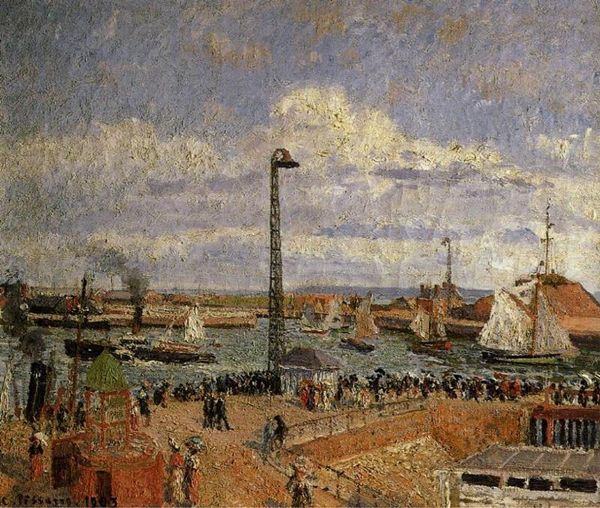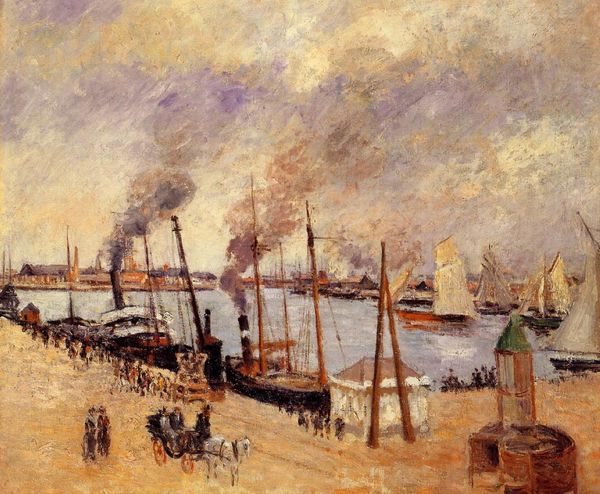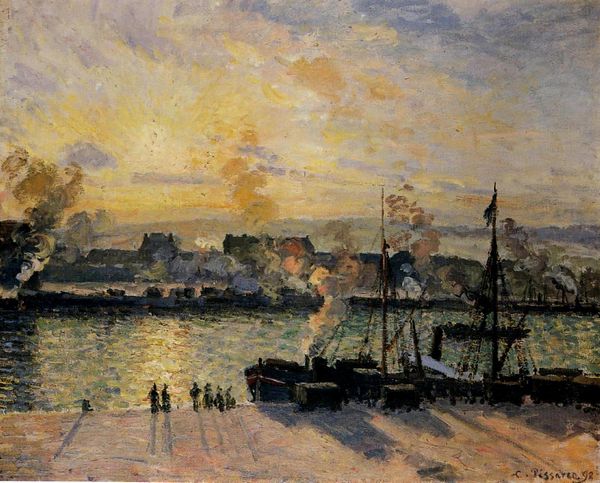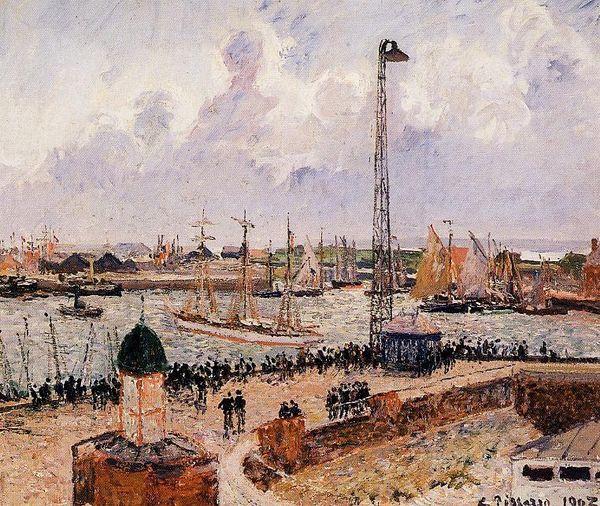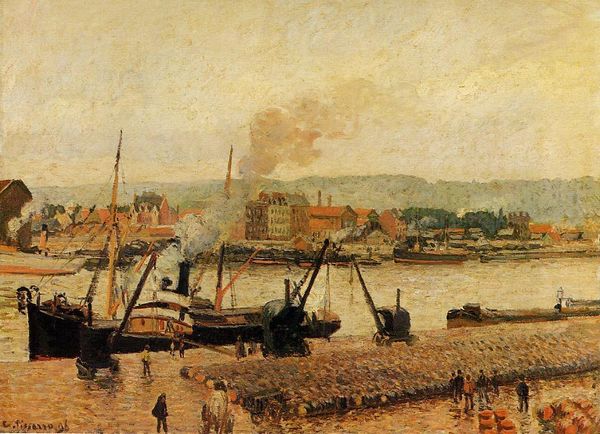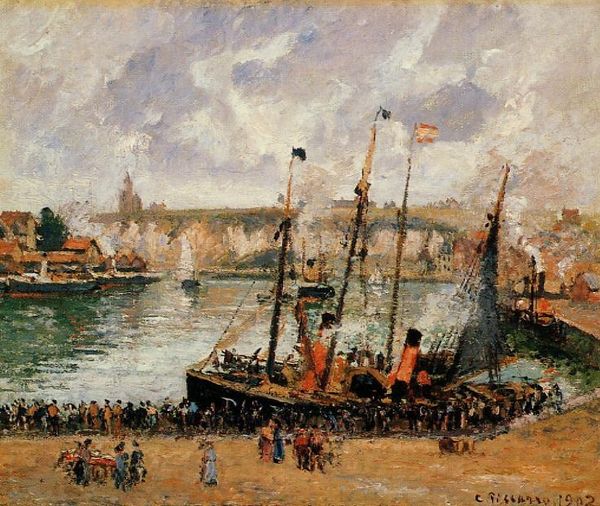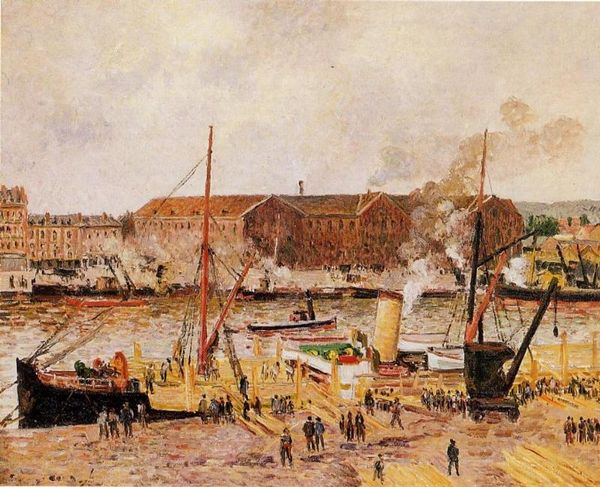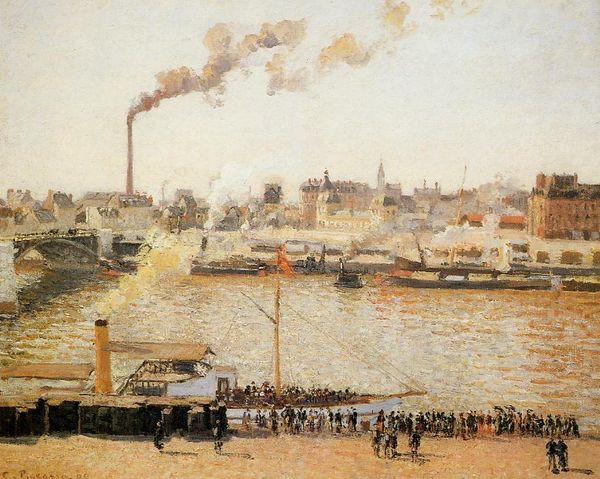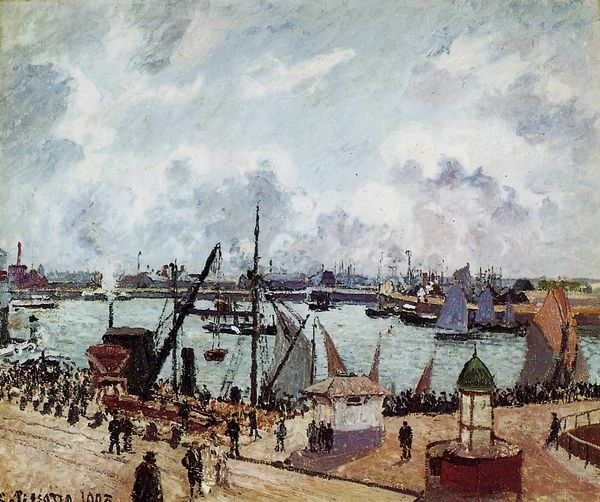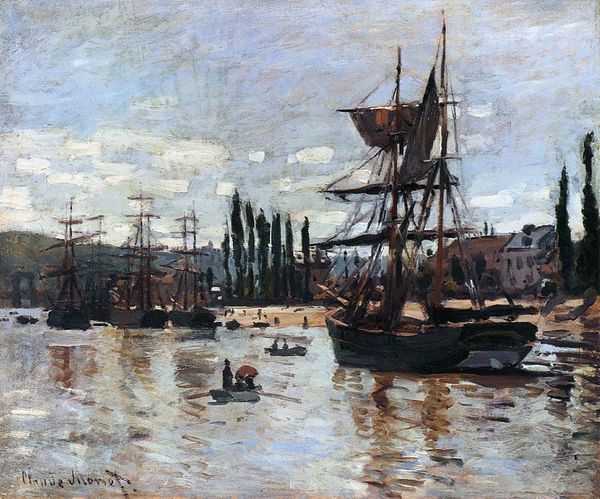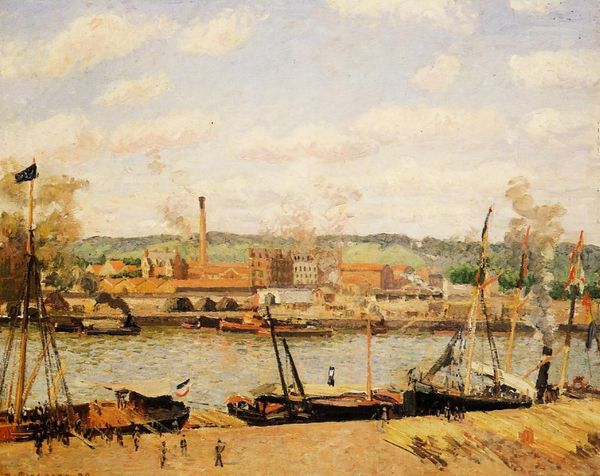
Dimensions: 50 x 81 cm
Copyright: Public domain
Editor: Here we have Camille Pissarro’s "The Port of Le Havre," painted in 1903. The oil paint gives it such a hazy, almost dreamlike quality. What strikes me most is the sheer number of people depicted; what is your interpretation of this work? Curator: Pissarro’s depiction of Le Havre isn't just a pretty cityscape; it's a glimpse into the societal shifts happening at the turn of the century. The bustling port reflects the rise of industrial capitalism. What does the depiction of working-class people suggest to you in terms of class consciousness and solidarity at that time? Editor: I guess the huge numbers emphasize the labor required to power this port city. Is Pissarro commenting on the value of that labor or the exploitation? Curator: Perhaps both. The Impressionists often captured fleeting moments, but Pissarro's work frequently hints at deeper socio-political realities. Think about who benefits from this industrial activity versus who bears the cost. Where is the line drawn between romanticizing and criticizing modernization? Editor: So, it's not just a scene but a social commentary wrapped in soft brushstrokes? I hadn't considered the people as individuals with political weight. Curator: Exactly. This is not passive observation. The artist chooses what and how to depict it, inviting viewers to engage critically. How do these themes of labor and industrialization resonate today? Editor: Thinking about current conversations around labor rights and environmental concerns, it feels relevant and challenging. Thanks, I definitely see more to the painting now! Curator: Absolutely, and hopefully this will help to critically view and question how art engages with history and politics, now and into the future.
Comments
No comments
Be the first to comment and join the conversation on the ultimate creative platform.
